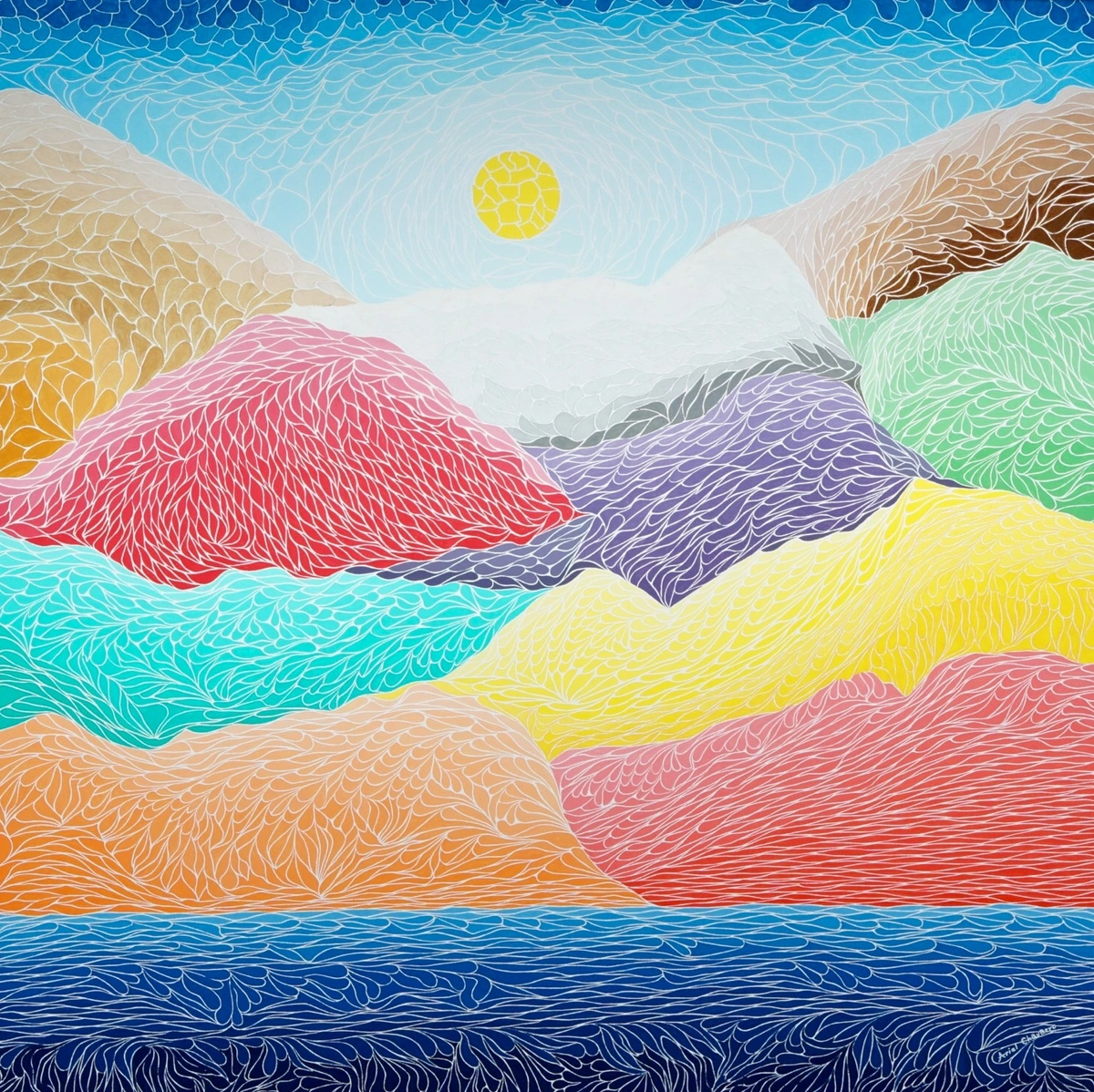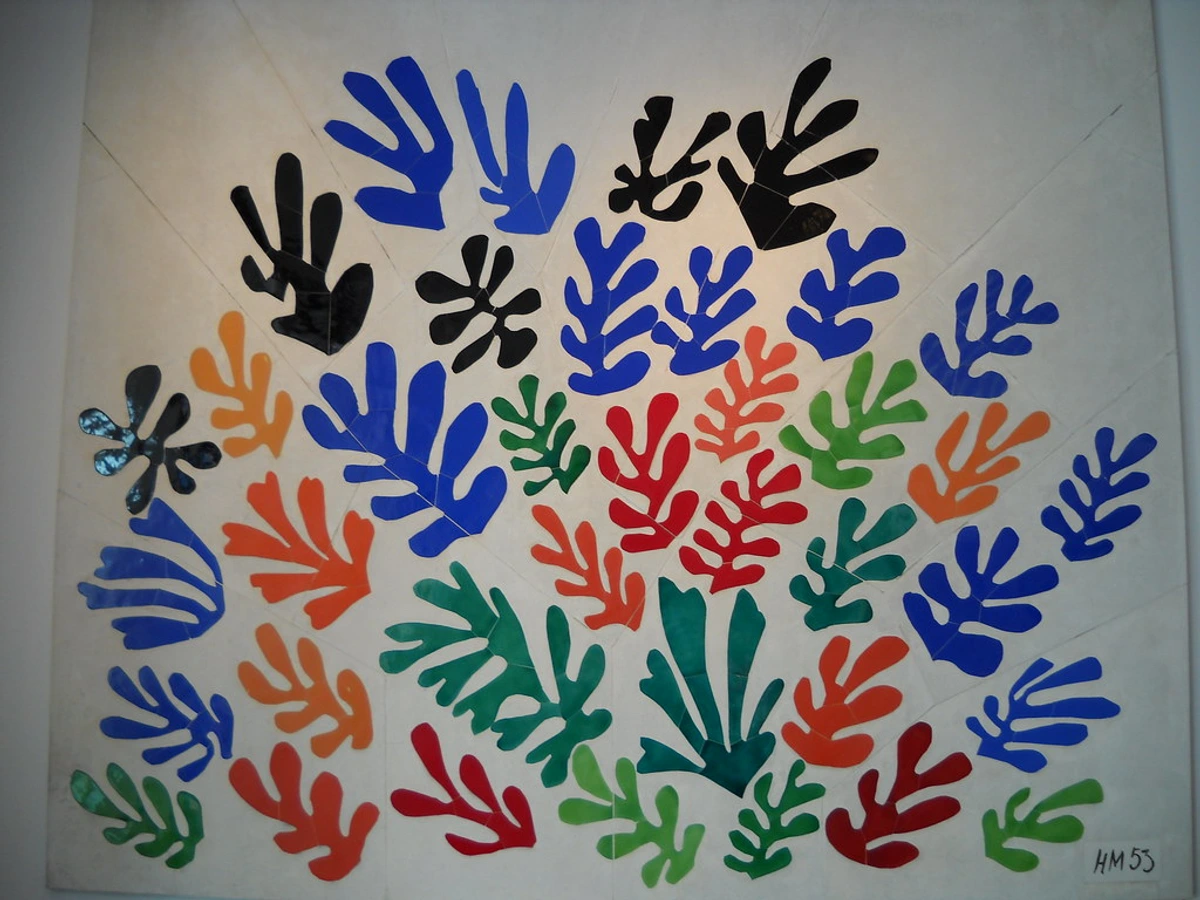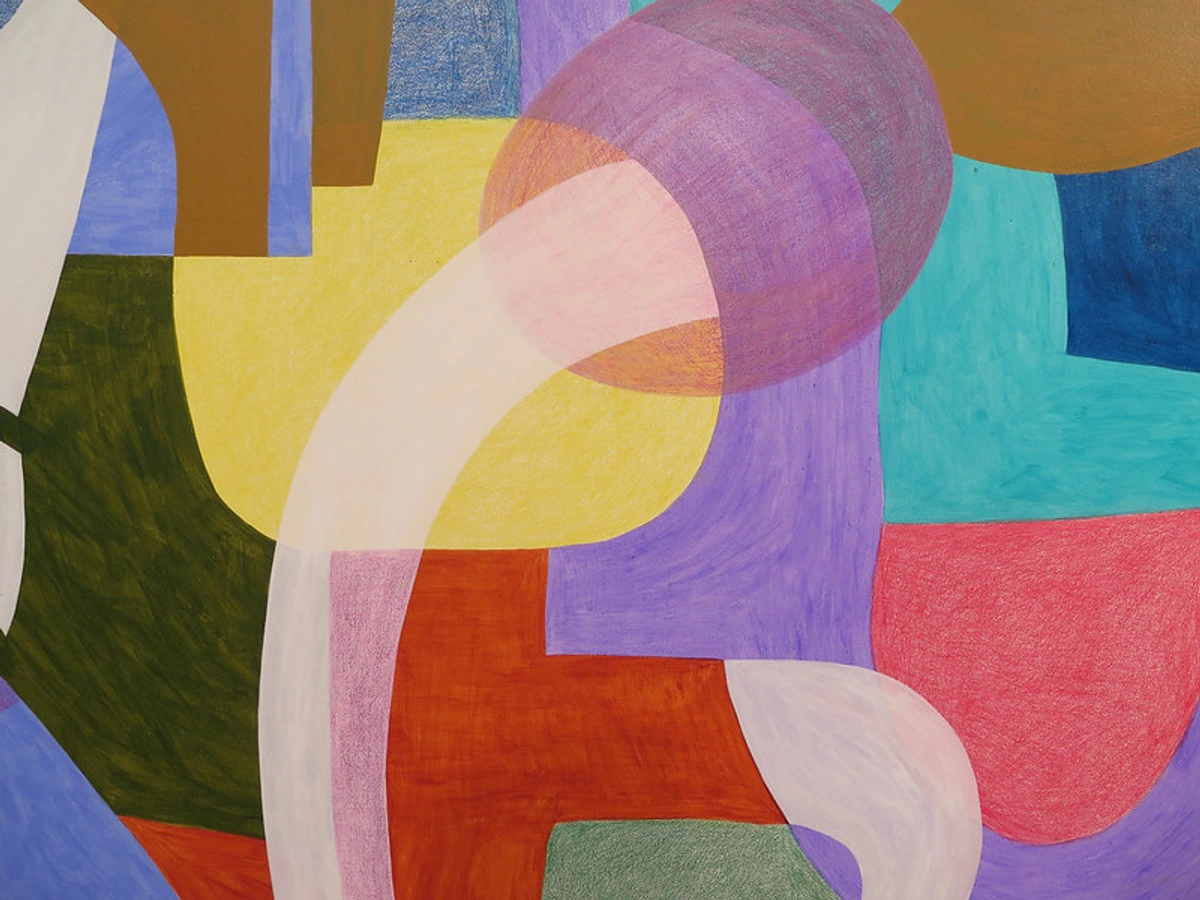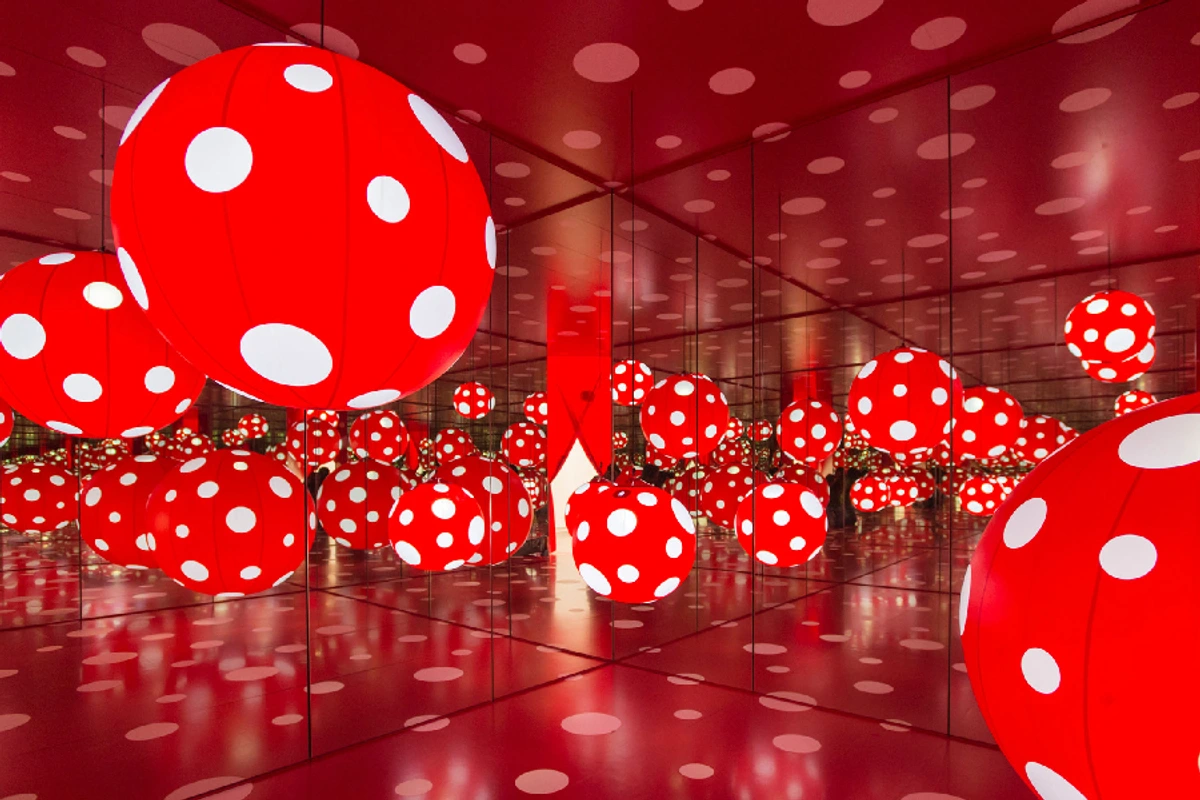Finding Your Inner Landscape: How Abstract Art Can Be a Mirror to Your Inner World
You know that feeling when you're standing in front of an abstract painting, and your brain just goes, "Is that it?" For some, it's just 'a lot of squiggles and blobs,' a sentiment I completely understood for years. Maybe you nod sagely, pretending to 'get it,' or maybe you just walk on by. Been there, done that, bought the invisible t-shirt – probably still wearing it, actually. For the longest time, I felt the same. I'd look at a canvas bursting with color and form, and my mind would dutifully search for a boat, a tree, a vaguely human shape – anything familiar. And when it found nothing, I’d just shrug.
But then something shifted. It wasn't an epiphany under a spotlight, more like a slow, quiet whisper in my mind. I started realizing that the 'missing' recognizable subject wasn't a flaw in the art; it was the entire point. Abstract art isn't trying to show you what to see; it's inviting you to feel what you see. And in that feeling, in that pure, unadulterated emotional response, something profound happens: you start seeing yourself. This journey, for me, is still unfolding.
A Quiet Revolution: When Art Looked Inward
Before we dive deeper into how abstract art acts as a mirror, it's worth pausing to remember its profound origins. Imagine a world where art was primarily about replicating reality – portraits, landscapes, historical scenes. Then, in the early 20th century, a quiet revolution began. The invention of photography had freed artists from the imperative of literal representation, prompting a deeper question: what if art could express the unseen? What if it could capture emotions, spiritual experiences, or pure ideas directly, without needing to show a tree or a face? Visionaries like Wassily Kandinsky, often credited with creating one of the first purely abstract works, saw art as a spiritual necessity, using color and form to express inner truths and emotional states, much like a visual symphony. Hilma af Klint, whose groundbreaking abstract works, envisioned as direct representations of spiritual planes, radically predated many of her male counterparts, pursued abstraction as a means to explore unseen dimensions and cosmic order. And later, Mark Rothko, with his luminous, hovering color fields, aimed to evoke profound emotional and spiritual experiences, inviting viewers into contemplative silence. These pioneers began exploring art as a language of the soul, a direct pathway to inner worlds, paving the way for the profound personal connection we feel today. It wasn't about what you saw anymore; it was about what you felt. This shift laid the groundwork for abstract art to become a true mirror to the human experience and a compelling subject for collecting abstract art. It also marked a pivotal moment in the history of abstract art, transitioning from traditional representation to a more introspective and subjective form.

More Than Just Paint: The Unspoken Conversation
Think about it. When you look at a photograph of a sunset, you're seeing a sunset. Your brain processes it, perhaps you recall your sunsets, but the initial perception is external. With abstract art, that step is often skipped. There's no sunset to identify. Instead, your mind fills the void. It takes the colors, the textures, the composition, and it starts to interpret them through the filter of your own experiences, your own mood, your own memories. It’s less about a direct message from the artist and more about a whispered conversation between the canvas and your soul.
I remember once staring at a particularly chaotic piece, a maelstrom of reds and blacks. My first thought was, "Well, that looks like a bad mood on canvas." But the longer I looked, the more it resonated with a period in my own life that felt equally chaotic and overwhelming. It wasn't the artist's chaos I was seeing; it was my chaos, reflected back at me. And suddenly, I didn't feel so alone.

This is the real magic. Abstract art doesn't dictate; it suggests. It opens a door to introspection. It’s like a visual Rorschach test for your deepest self. What emotions do those swirling blues evoke? Does that sharp line feel like tension or release? Does the vibrant burst of yellow feel like joy or a scream? There's no wrong answer because it’s your answer. This personal connection is one of the most compelling reasons why people are drawn to abstract art, and often, why they begin collecting abstract art as a personal journey.
The Elements of Reflection: Color, Form, and Texture
So, how exactly does this reflection happen? It's not magic, though it often feels like it. It's the skillful manipulation of basic art elements – the fundamental building blocks artists use to create their work – and the principles of design by which they arrange them, which then trigger something in us. These principles, distinct from elements, guide how elements are organized to create impact. It’s like a secret language, and once you start recognizing its alphabet, a whole new world of conversation opens up. This approach holds true regardless of the specific stylistic approach an artist takes within abstraction – be it the structured precision of geometric abstraction, the free-flowing emotionality of lyrical abstraction, or the raw energy of action painting. Each style offers a different lens through which to engage with your inner landscape, a journey further explored when decoding abstraction.
Think of it as a brief guide to the visual vocabulary that abstract artists employ:
Element | What it is (Artist's Tool) | What it evokes (Your Reflection) |
|---|---|---|
| Color | Hue, saturation, value; warm, cool, complementary | Mood, energy, temperature, specific emotions (joy, sadness, passion) |
| Line | Path of a moving point; straight, curved, jagged, thick, thin | Direction, movement, tension, flow, stability, chaos, intimacy |
| Form | 2D (shapes) & 3D (volume); geometric, organic, amorphous | Structure, balance, weight, familiarity, order, freedom, confinement |
| Texture | Perceived surface quality; smooth, rough, impasto, layered | Tactile sensation, realism, vulnerability, resilience, depth |
| Composition | Overall arrangement of elements; balance, rhythm, emphasis, unity | Harmony, dissonance, direction, focus, emotional weight, narrative flow |
| Space | Area around/between forms; positive/negative, depth | Openness, confinement, vastness, intimacy, emptiness, presence |
The Power of Color
Color, oh color! It's an immediate emotional punch. Red can be anger, passion, or warmth. Blue, calm, sadness, or vastness. For me, a deep, saturated blue often evokes a sense of profound peace, like staring into the ocean on a clear day. But for you, it might feel like melancholy. Neither is wrong. The artist creates a palette, sometimes using complementary colors for vibrancy or a limited palette for subtlety, and your inner world interprets it. As I explore in my own work and approach to palette and emotion, harnessing this raw emotional power is central.

The Power of Line
Line! They're not just boundaries; they're pathways, emotions, and energies. A sharp, jagged line can feel like tension, a sudden jolt, or even anger. Think about the nervous energy in a busy cityscape. Then, a smooth, flowing curve can evoke calm, grace, or a gentle whisper. A broken, hesitant line might speak of vulnerability or uncertainty. When I'm working with lines, sometimes a simple stroke just insists on going where I didn't plan, and that's often when the real conversation between me and the canvas begins – a delightful, unpredictable dance. It’s amazing how a simple stroke can convey so much, isn't it? Understanding how to read a painting often begins with its lines and forms.

Form
Beyond color and line, the forms play a huge role. Jagged shapes, smooth curves, overlapping elements – they all create a certain rhythm and tension. Is it a rigid, geometric form that speaks of order, or a soft, organic shape that feels more fluid? It’s like the artist is setting the stage, and your mind is improvising the play. I sometimes find myself wrestling with a particular shape, trying to force it into a narrative, only to realize its true power lies in its unyielding defiance, reflecting perhaps my own stubbornness. In my own process, when I'm working on a new piece, I'm often thinking about the role of negative space in abstract art – how the 'empty' areas can define the feeling just as much as the painted ones. Learning about what makes abstract art compelling often involves delving into these compositional choices.
Texture and Depth
Then there's texture. Oh, how I adore texture! A heavily textured piece, with its visible brushstrokes and palpable layers, invites you to almost feel the art. It adds another dimension, a tactile quality that can make the work feel more real, more visceral. It can evoke ruggedness, softness, resilience, or even vulnerability. When I apply thick impasto, for instance, I'm hoping to convey a sense of strength or raw emotion, inviting you to run your fingers (metaphorically, of course!) across the canvas. It’s a sensory exploration, and one of the aspects I explore most in my own creative process: from concept to canvas in abstract art. This tactile quality is a key part of exploring texture in abstract art.
Composition: The Silent Architect of Emotion and Meaning
While individual elements like color and line have their own power, it's their composition – how they are arranged and interact within the frame – that truly orchestrates the visual experience. Think of it as the unseen backbone of the painting, silently guiding your eye and influencing your emotional response. Principles like balance (whether symmetrical, providing calm order, or asymmetrical, sparking dynamic tension), rhythm (the deliberate repetition and variation of elements guiding your eye's dance across the canvas), emphasis (how an artist directs your gaze, highlighting a particular emotional core or focal point), and unity (the cohesive feeling that all parts, no matter how disparate, belong together, forming a complete statement) are not accidental. They are deliberately employed by the artist to orchestrate your experience. It's in this careful choreography that abstract art can feel so profoundly impactful, even without a recognizable subject, guiding your emotional journey as surely as a conductor leads an orchestra, much like decoding abstraction can reveal deeper meanings.

Space
And then there’s space – not just the empty bits, but the breathing room, the vastness, or the intimacy of the canvas. It's often overlooked, but the strategic use of positive and negative space (the areas occupied by forms versus the areas around and between them) can profoundly define the feeling. A piece with lots of open, expansive space might make you feel liberated, calm, or even isolated, inviting quiet contemplation. Conversely, a densely packed composition with overlapping forms might feel confining, protective, or overwhelming, sparking a sense of intensity or complexity. It’s like the artist is setting the stage, and your mind is improvising the play within that environment, navigating its visual architecture. I've sometimes felt a surprising sense of calm in a piece dominated by 'empty' space, almost as if the canvas itself was taking a deep breath, and I found myself doing the same. I often find myself thinking about the pull and push of space – how to draw the viewer into the piece, or how to create a sense of infinite possibility, much like the role of negative space in abstract art that I constantly explore.
![]()
How to Find Your Reflection in Abstract Art
Okay, so you're intrigued. You want to try this "inner mirror" thing. Where do you start? It’s simpler than you think, and honestly, a bit like meditating, but with paint.
- Drop Your Expectations: The biggest hurdle is trying to 'understand' it in a literal sense. Let that go. Trust me, the art isn't trying to trick you into seeing a toaster.
- Feel, Don't Analyze: Stand in front of the art. What's your immediate gut reaction? Does it make you feel calm? Uneasy? Energized? Sad? Don't censor.
- Ask Yourself, "Why?": If you feel something, ask yourself why. Is it the color? The shape? Does it remind you of a feeling you've had before? A memory? This isn't about solving a riddle; it's about exploring your own internal landscape.
- Embrace the Ambiguity: The beauty of abstract art is that it doesn't tie you down to a single meaning. Its meaning evolves with you. The way it speaks to you today might be different tomorrow, or next year, as your inner world shifts. This constant evolution is part of the allure of understanding abstract art.
It’s a deeply personal process, and it's why I believe interpreting abstract art is less about a universal truth and more about a private revelation. When you engage with art in this way, it stops being just a decoration and starts becoming a confidant, a catalyst for self-discovery.
As a little experiment, perhaps take a moment now to look at one of the abstract pieces presented earlier in this article – maybe the vibrant Kandinsky, or the emotionally charged Richter. Try applying these steps. For instance, if you're looking at the Richter and you feel a sense of internal conflict, ask yourself: "Why do I feel conflict? Is it the sharp lines, the clashing colors, or does it echo a feeling I've carried recently?" What emerges for you?

FAQ: Peeking Into the Mirror
Still got questions swirling in your mind about this intriguing connection? Let's peek into some common thoughts and curiosities you might have about this whole 'abstract art as a mirror' idea.
Q1: Is there a "right" way to feel about abstract art?
Absolutely not! That's the whole point. Your emotional response is valid, unique, and deeply personal. If someone tells you you're feeling it "wrong," they're probably missing the essence of abstract art themselves. It's your mirror, not theirs.
Q2: What if I feel nothing at all?
That's okay too! Not every piece of art will resonate with everyone, just like not every song or book does. Sometimes, you might need to try a few different pieces, or come back to it another day when your mood is different. Think of it like trying new foods – some you love, some you don't. And hey, at least you don't have to awkwardly pretend to like it at a dinner party. No biggie.
Q3: How can I tell if an abstract piece is "good" if it's so subjective?
"Good" is tricky. Beyond personal connection, professional artists often consider composition, the power of color, technique, and how well the artist uses the visual language to evoke a feeling or idea. A skilled artist uses these elements intentionally to create a cohesive and impactful experience, even if it's not representational, which often contributes to its lasting power and ability to resonate deeply with many viewers over time. But for your reflection, "good" simply means it speaks to you. If you're looking to start building an abstract art collection, you'll learn to trust your instincts more and more. Ultimately, the 'best' abstract art is the one that best reflects you.
Q4: Can looking at abstract art help with self-discovery?
Absolutely! By observing your reactions and connecting them to your inner state, abstract art becomes a tool for introspection. It can reveal hidden emotions, forgotten memories, or even insights into your current mindset. It's a non-verbal diary.
Q5: What if I don't have any art background or knowledge?
Good news! You don't need a PhD in art history to connect with abstract art. In fact, sometimes having fewer preconceived notions helps. It's about your gut feeling, your personal resonance, not academic analysis. Your life experience is your only prerequisite. Just bring your authentic self.
Q6: How can I start creating abstract art myself to explore my inner world?
You absolutely should! It's a fantastic way to engage with the concepts we've discussed. Start simple: grab some paints (even just a few colors), paper, and let go of the idea of making something 'good' or 'recognizable'. Focus on the feeling you want to express. Try quick, intuitive strokes. Explore how different colors feel together. Don't overthink it. It's about the process and what you discover about yourself along the way. Think of it as a visual journal entry. For more detailed guidance, check out my guide on how to make abstract art.
Q7: Does the artist's original intention matter when I'm looking for my own reflection?
While understanding an artist's intention can certainly add layers of appreciation and context to a work, it's not strictly necessary for your personal reflection. Think of it this way: a composer writes a song with a specific emotion in mind, but your experience of that song might be entirely different, and equally valid. Abstract art, perhaps more than any other form, thrives on this personal resonance. Your mirror is yours, and what you see in it is real to you, regardless of what the artist initially 'intended.'
Your Inner Landscape on Canvas
In the end, approaching abstract art isn't about being lectured or educated; it's about being seen. It's about finding a visual echo of your own complicated, beautiful, messy inner world. It’s an invitation to pause, to look inward, and to realize that sometimes, the most profound connections are found not in what is explicitly shown, but in what is intuitively felt. Perhaps exploring mindful viewing with abstract art can deepen this experience even further.
So, next time you encounter an abstract painting, don't just see shapes and colors. See a potential mirror. See an opportunity to connect with a part of yourself you might not have visited in a while. And if a particular piece truly resonates – if it whispers back to you – perhaps it's a reflection you'd like to bring home, continuing this profound journey of self-discovery right on your wall. Should that feeling strike, I invite you to explore my art for sale or visit my museum in 's-Hertogenbosch to experience it firsthand. Who knows what you might discover about yourself?